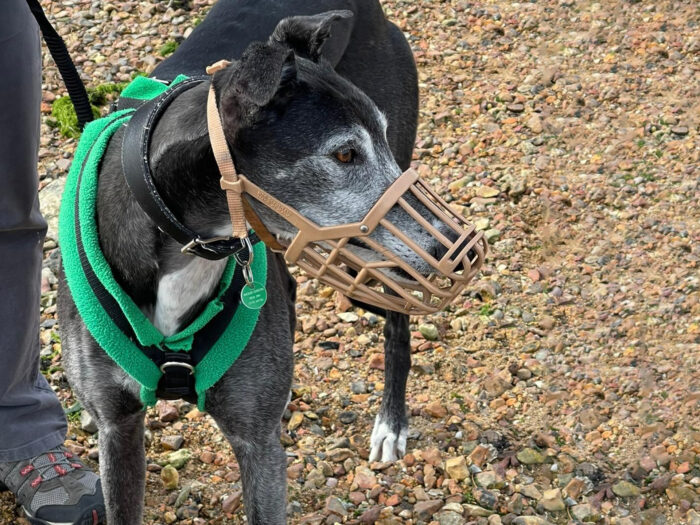When it comes to pets, we've all got questions
Ever feel like your pet is from another planet?
What you need to know about the XL Bully type ban, and how we can help.
We understand this a very worrying time for many owners of bully type dogs. The government’s plan to ban the XL Bully has left many people with questions, and we’re here to help with advice and support.
Below, you’ll find everything you need to know about the ban at this stage, what to do next, how to prepare, and relevant training advice videos. For more advice, please don’t hesitate to get in touch.
We will update this page regularly with the latest information and advice.
The Government announced on 31 October that the XL Bully type dog has been added to the banned breeds list in England and Wales.
From 31 December 2023, breeding, selling, advertising, rehoming, or abandoning an XL Bully type dog will be illegal. These dogs must be kept on a lead and muzzled in public beyond this date.
As of 1 February 2024, it will officially become illegal to own an XL Bully dog if not registered on the Index of Exempted Dogs. Owners will have until 31 January 2024 to apply for an exemption from the ban.
From 1 February 2024 it will be a criminal offence to own an XL Bully in England and Wales unless you have a Certificate of Exemption for your dog. Owners will have until 31 January 2024 to apply for this exemption. Before you apply, you will need to pay the application fee of £92.40 per dog and have a third party insurance policy. You will also need to provide your dog(s) microchip details as part of the application.
If you own a dog who could be an XL Bully, we understand this must be a distressing time. It’s important to understand, and prepare for, the ban in the best way you can – from checking the government’s definition to starting any training that your dog might need.
Read on for more information and advice.
Since the initial announcement of the proposed ban, the Government has developed a definition of an XL Bully, including their height, shape and other features.
In short, the XL Bully is defined as a large dog with a muscular body and blocky head, suggesting great strength and power for its size.
The law relates to the type of dog rather than the breed, and prohibited types are identified according to their appearance rather than their breed name, genetics (DNA), or parentage. The government’s definition includes specific features of the type, such as their height, shape and other features. It describes the XL Bully as a “large dog with a muscular body and blocky head, suggesting great strength and power for its size.”
Height is an important factor: if your dog is smaller than the height specified in the Government’s definition then they are not an XL Bully, and you don’t need to look at any other aspects in the definition. The height should be measured from the ground to the withers (which means the point of the body immediately behind the neck, at the top of the shoulders), not any higher point on the dog.
The Government has defined an XL Bully as:
If your dog is larger than this height, then they still may not be an XL Bully. You need to look at all the other elements of the definition.
If you’re unsure whether your dog matches the official definition of an XL Bully, the Government recommend complying with the exemption process to be on the safe side.
The first step is to read the government’s official definition. This will help you determine whether your dog is an XL Bully.
Your dog will need to be:
And owners must:
You can start preparing by making sure your dog is neutered, microchipped, and trained to wear a muzzle. You can also obtain third-party liability insurance through the Dogs Trust Membership scheme.
The Dangerous Dogs Act was introduced in 1991. It gave the government the power to ban any breed appearing to be bred for fighting or to have the characteristics of a type bred for that purpose. Under the Dangerous Dogs Act, the following breed types are banned in the UK:
It’s illegal to breed, sell, give away or abandon a banned type of dog. If you own a dog of this type and don’t have a certificate of exemption, the police can seize the dog and keep them. This can happen even if they’ve not acted dangerously and no complaint has been made. The next step would be a court process to determine if the dog poses a danger to the public and if the owner can apply for an exemption certificate.
If you need any advice or support, please don’t hesitate to get in touch. We’re keeping a close eye on plans for the ban, so please check this page and our social media channels for updates.
With exempt dogs needing to wear a muzzle and be kept on a lead at all times, you may be looking for training advice. If you can, it’s best to start sooner rather than later. Watch our experienced behaviourists guide you through the key training methods which are relevant to your dog at this time, and contact us if you need more advice.



If you own an XL bully type dog, then you must ensure your dog is neutered and microchipped, to comply with the new exemption rules. It is already a legal requirement to microchip any dog in the UK, before they are eight weeks old. Similarly, neutering any breed or type of dog has many benefits, please read on to find out more.


